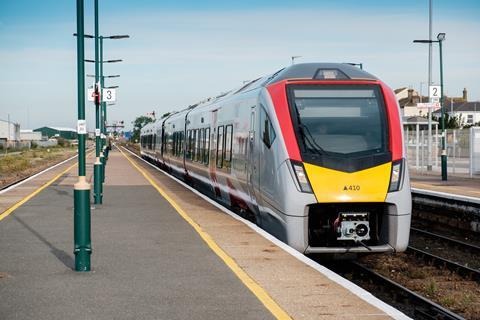
UK: The reduction in train services during the coronavirus pandemic unsurprisingly led to a reduction in network-wide diesel and electricity consumption in 2020-21, although the collapse in ridership meant an increase in CO2 equivalent per passenger-km.
The Office of Rail & Road has published its latest annual statistics for electricity and diesel consumption of main line passenger and freight operators in Great Britain, and estimates of their associated CO2e emissions. Non-traction emissions are not included.
The total estimated CO2e emissions for passenger and freight trains fell to 2 282 kilotonnes in 2020-21, down 21% on 2019-20 and the lowest level since the comparable time series started in 2011-12.
Electricity consumption for passenger trains totalled 3·7 billion kilowatt hours, a 12% decrease from 2019-20. This led to a 20% decrease in CO2e emissions attributed to electricity generation to 868 kilotonnes.
Diesel consumption by passenger trains decreased by 26% to 354 million litres, resulting in 977 kilotonnes of CO2e emissions. Total passenger emissions fell 23% to 1 845 kilotonnes.
However, the reduction in passenger-km meant CO2e emissions for passenger trains increased 316% to 146·5g CO2e per passenger-km.
ORR’s data shows that since 2016-17 emissions from electricity usage have been lower than with emissions from diesel use, despite increases in electricity usage across the network. This is predominantly due to a transition towards renewable energy sources by the electricity sector.
Electricity consumption for freight trains decreased by 9% to 64 million kWh in 2020-21, and diesel consumption decreased by 11% to 153 million litres. As a result, freight emissions fell 11% to 437 kilotonnes.
ORR notes that rail made up 1·4% of the UK’s transport CO2e emissions in 2019, and 9·5% of all passenger kilometres were by rail. Rail emissions accounted for 0·4% of the UK’s total CO2e emissions in 2019.



